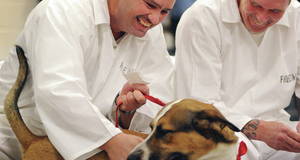Voice Therapy: A Safe and Effective Alternative to Voice Surgery
By
2012, Vol. 4 No. 08 | pg. 2/2 | « In her work, Andrews also focused on case studies of individuals who have benefited from voice therapy to develop beneficial voice habits. A specific case study that she mentioned is of a young woman named Catherine Watson, who was a senior cheerleader at her local high school. Catherine was constantly using her voice and wearing it out during football games, competitions and cheerleading practices, which led to her diagnosis of dysphonia. Catherine continued with voice therapy for six weeks after her diagnosis, healed her voice disorder, and returned to cheerleading, applying what she had learned in voice therapy as she cheered. As a result, Catherine never had dysphonia again (p. 239). The examples of case studies that Andrews provided in her work prove that voice therapy is effective in the healing of voice disorders. The case studies also indicate that the techniques used in voice therapy can be used to preserve the quality of voice throughout a lifetime. Voice therapy is effective to heal a variety of voice disorders to preserve a lasting healthy voice, such as bilateral vocal cord nodules, dysphonia, and the common case of laryngitis. Voice therapy is also effective for swelling of the vocal cords, lesions, and cists in the larynx. K. Vashani (2010), an otolaryngologist in the departments of Audiology, Speech Therapy and Gastroenterology at BYL Nair Hospital and TN Technical College in Mumbai, India, introduced a voice disorder in her article titled “gastroesophageal reflux” that requires voice therapy. She stated “Gastroesophageal reflux (GER) with laryngopharyngeal reflux plays a significant role in voice disorders. Dysphonia is a significant problem in GER. Treatment for GER improves dysphonia, but in addition, voice therapy enhances the improvement” (p. 28). Frequent hoarseness is a common symptom of GER, and Vashani explained in her article how voice therapy is effective in the healing of a hoarse voice. Hoarseness is a voice defect that many people experience often, whether it is due to the common cold, bacterial infection or a specific voice disorder, and the techniques that are practiced in voice therapy will teach individuals who are hoarse beneficial habits that they can use to maintain a permanent healthy voice. In addition to being less effective and expensive, voice surgery can also cause a series of complications that can be detrimental to the quality of voice. The methods of voice surgery can cause extreme scarring on the tissue of the larynx, perhaps producing a permanent change in voice. According to H.M. Tucker (1993), an otolaryngologist in the Department of Otolaryngology and Communicative Disorders at the Cleveland Clinic Foundation in Cleveland, Ohio, “Several years' experience in a major referral center with various types of laryngeal framework surgery has led to a number of complications, such as late extrusion of the prosthesis and delayed hemorrhage.” The complications that Tucker stated in his article can have a fatal effect on the quality of voice, and even require further surgery to repair the vocal cords. These complications can serve as an extreme inconvenience to those who receive voice surgery, in the sense that it is more dangerous and may eventually take longer to repair the vocal cords than the process of voice therapy alone. The risks of surgical complications that may permanently jeopardize the quality of voice make the option of voice surgery as opposed to voice therapy, which is safe and risk-free, seem less appealing.The practice of therapeutic techniques to preserve the quality of voice in voice therapy is also effective to reduce the risk of developing a voice disorder in the future. Voice disorders are primarily caused by practicing poor voice habits, including screaming throughout a sports game, talking on the phone all day at work, or merely attempting to speak with a large group friends at a restaurant (Theiss, 2010). If practiced repeatedly, these voice habits can have a severe effect on the larynx and the quality of voice, in the sense that they strain the voice to the point where it is difficult to produce sound. In extreme cases, these voice habits can put enough pressure on the larynx that no sound comes out at all, causing a paralyzed vocal cord. The process of voice therapy can help to omit these bad habits through the practice of therapeutic techniques to avoid the risk of developing a severe voice disorder. Jane Brody (1986), an American author on science and nutrition topics including voice therapy, stated, “But even if surgery is necessary, as it is in most cases, the speech pathologist can help correct bad vocal habits and teach how to protect the vocal cords from future damage” (p. 1). Although Brody believes that surgery is inevitable in most cases, she stated that voice therapy is effective in the reparation of a voice disorder. The therapeutic techniques that voice therapists teach, if used often, will effectively prevent voice disorders in the future. In order to completely benefit from the process of voice therapy to prevent voice disorders in the future, it is crucial that an individual practices the therapeutic techniques that voice therapy advises regularly. It is common for many to not take voice therapy seriously, as it is a relatively slower process and includes techniques that may seem meaningless and tedious to some. These therapeutic techniques, if practiced often throughout the span of voice therapy, are effective in the healing of a variety of voice disorders. According to Alison Behrman (2008), an Assistant Professor at Iona College with a doctorate in Speech Communications from Columbia University, when speaking about the effects of voice therapy, “Adherence is a critical mediator of the outcome” (p. 361). In this article, Behrman explained how vocal hygiene and patient adherence is crucial in voice therapy to preserve the quality of voice. She believes that throughout the process of voice therapy, it is important to obey the rules that voice therapy promotes. In order to preserve a healthy voice and prevent the risk of acquiring a voice disorder in the future, an individual must take voice therapy seriously and adhere to its regulations. Voice therapy is a process that is effective for an individual of any age to heal or prevent a voice disorder. It is possible to acquire a voice disorder at any age, depending on the voice habits that an individual may have. A young child in a large family may have developed a habit of speaking loudly to be heard over his or her siblings, or an older man may be an avid football fan who cheers often throughout games, which causes trauma to the vocal cords. Edie Hapner (2010), the director of Speech Language Pathology at Emory Voice Center, stated “Voice therapy has been demonstrated to be effective for hoarseness across the lifespan, from children to older adults” (p. 4). Hapner believes that the techniques of voice therapy have an effect on an individual of any age. He also believes that effective treatment and even prevention of voice disorders is possible through voice therapy. Voice therapy is a safe and effective alternative to voice surgery for a variety of reasons, as it guarantees a strong and healthy voice without the risk of surgical complications. Voice therapy provides those with voice disorders countless therapeutic techniques to ease pressure in the larynx to preserve the quality of voice. Voice therapy also corrects bad voice habits to prevent voice disorders in the future. It is very possible for an individual such as a musician, teacher, politician or coach to acquire a voice disorder throughout his or life, as they are occupations that require constant use of voice. It is common for an individual of any age to experience a voice disorder, even if it is merely occasional hoarseness, and voice therapy safely heals the vocal cords to enhance the quality of voice. The process of voice therapy is proven to be effective in the reparation of voice disorders, and creates a strong and healthy voice that, if maintained, will last a lifetime. ReferencesAndrews, M.L. (1999). Manual of Voice Treatment: Pediatrics to Geriatrics, Second Edition. Clinical Competence Series. San Diego, CA: Singular Publishing Group. Baken, R.J. (2000). Clinical Measurement of Speech and Voice, Second Edition. San Diego, CA: Singular Thompson Learning. Behrman, A. (2008). Vocal hygiene education, voice production therapy, and the role of patient adherence: a treatment effectiveness study in women with phonotrauma. Journal of Speech, Language, and Hearing Research. 350-366. Retrieved from Proquest database. Brody, J.E. (1986). Speak out if hoarseness lasts too long. Orange County Register, k01. Retrieved from Proquest database. Hapner, E.R. (2010). Hoarseness guidelines endorse voice therapy. ASHA Leader, 4. Retrieved from Proquest database. Kavinda, D. (2011). Effectiveness of voice therapy for patients with vocal nodules. Australian Medical Journal, 7, 359-360. Retrieved from Proquest database. MacKenzie, K. (2001). Is voice therapy an effective treatment for dysphonia? A randomized controlled trial. British Medical Journal, 658-661. Retrieved from Proquest database. Niebudek-Bogusz, E. (2011). The effectiveness of voice therapy for teachers with dysphonia. Folia Phoniatrica et Logopaedica, 134-141. Retrieved from Proquest database. Theiss, E. (2010). Bad vocal habits can take away the power of your voice. Health and Fitness Index on Cleveland.com. Retrieved from http://www.cleveland.com/healthfit/index.ssf/2010/11/bad_vocal_habits_can_take_away.html Tucker, H.M. (1993). Complications of laryngeal framework surgery. PubMed – US National Library of Medicine – National Institute of Health. Retrieved from http://www.ncbi.nlm.nih.gov/pubmed/8387128 Vashani, K. (2010). Effectiveness of voice therapy is reflux-related voice disorders. Diseases of the Esophagus. 27-32. Retrieved from Proquest database. Suggested Reading from Inquiries Journal
Inquiries Journal provides undergraduate and graduate students around the world a platform for the wide dissemination of academic work over a range of core disciplines. Representing the work of students from hundreds of institutions around the globe, Inquiries Journal's large database of academic articles is completely free. Learn more | Blog | Submit Latest in Health Science |
















